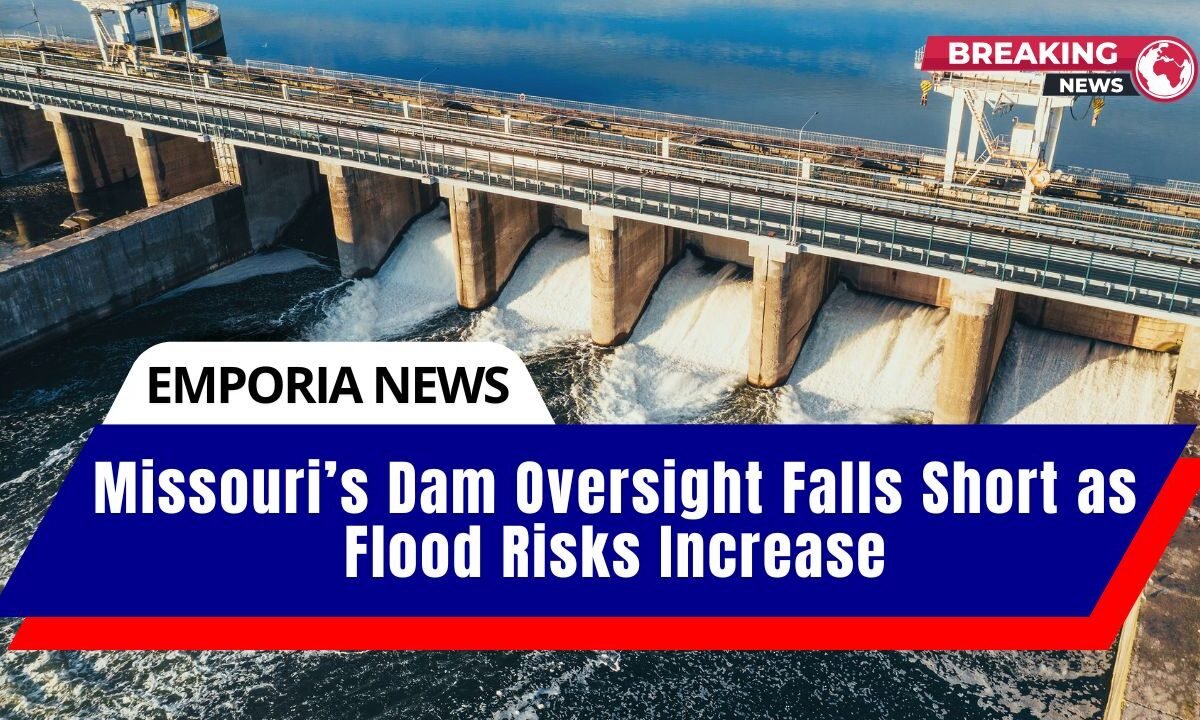Missouri faces mounting risks from increased flooding, yet the state’s dam safety regulations lag far behind national standards, leaving thousands at potential risk.
According to the Environmental Protection Agency, the Midwest has experienced a 10% increase in yearly rainfall over the past 50 years, with flood-related stream flows rising 20% and rainfall during the wettest four days climbing 35%.
These trends raise serious concerns for residents living near Missouri’s aging dams, such as the Iron Mountain Lake Dam, which prompted evacuations in November 2024 after over 6 inches of rain triggered its spillway.
Missouri Regulates Just 15% of Its Dams
The United States Army Corps of Engineers revealed that only about 15% of Missouri’s 5,000 dams—most of which are privately owned—are regulated by the state. In contrast, most states oversee more than 70% of their privately owned dams.
This discrepancy stems from a 10-foot regulatory loophole in Missouri law. While federal guidelines consider a dam 25 feet or taller as subject to regulation, Missouri’s standards apply only to non-federal, non-agricultural dams over 35 feet. This allows dam builders to avoid state oversight by constructing dams below the threshold.
According to Daniel Oerther, an environmental engineering professor at Missouri S&T, this loophole incentivizes the construction of 30- to 32-foot dams specifically to bypass regulations.
High-Hazard Dams Often Go Unmonitored
The Missouri Department of Natural Resources classifies 1,478 dams as “high-hazard”, meaning their failure could affect at least 10 downstream homes or businesses. However, only a third of these are actively regulated. In the St. Louis region alone, over 50 high-hazard dams remain unregulated.
The consequences are serious. Unregulated dams don’t require operational permits, safety inspections, or Emergency Action Plans (EAPs). Currently, only 490 high-hazard dams have an EAP in place, leaving many communities vulnerable in case of failure.
Budget Gaps in Dam Safety
Although Missouri spends more per regulated dam than most states, its investment in high-hazard dam safety is alarmingly low. According to the Association of State Dam Safety Officials’ 2024 report, Missouri allocates less than $2,000 per high-hazard dam, far below the $6,000 national average.
Still, Ryan Stack, chief engineer of the Missouri Dam Reservoir Safety Program, insists that dam owners are legally responsible for damages caused by failure—even if their dam is not regulated.
“If you own the dam, you’re responsible for the consequences,” Stack said.
Inside a Dam Inspection: What the State Actually Checks
Stack and his team inspect about 250 dams annually. During a recent visit to the 48-foot William E. Towell Dam in Phelps County, the team examined structural integrity through robotic spillway surveys, checks for changes in dam height, and signs of erosion from rodents or invasive species.
They also survey areas downstream to determine any new construction that could alter the dam’s hazard classification.
“People 15 miles downstream may not even know a dam exists upstream,” Stack emphasized. “We aim to broaden awareness and safety.”
As climate patterns intensify and floods become more frequent, Missouri’s dam safety framework—weakened by outdated laws and under-regulation—poses increasing threats.
With over a thousand high-risk dams lacking emergency plans, the state must reassess its regulatory standards and funding priorities to prevent future tragedies and protect downstream communities.




